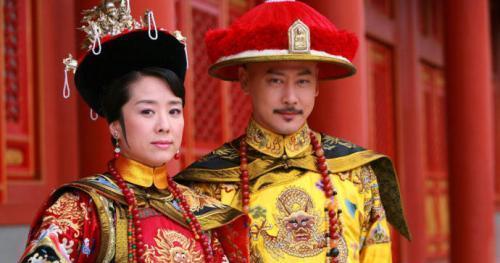At the beginning of the Qing Dynasty, there was an iron hat king, who was cremated after his death, but in a construction after the founding of the country, a "huge" treasure unearthed from the tomb of this prince set off a lot of waves in the archaeological community. What's going on here? What is this treasure? If you want to know, let Xiaobian reveal the secret for you.

In 1970, due to the needs of national construction, Beijing began to build high-rise buildings, a thriving scene. In the city's planning map, Jiasong Village in Chaoyang District is also being prepared, so the local engineering staff began to prepare to clear the way for the construction of buildings.
Few people know about Jiasong Village in Chaoyang District, but this is actually a tomb of Qing Dynasty princes, including the old tomb, the tomb of the great king, the tomb of the second king, the new tomb and the mausoleum garden, all of which are buried by the princes of the Su Wangfu in the past, a total of four generations and five. Among them, the mausoleum of the second prince of Su, Fu Shuo, is one of the targets of the relocation.
The superiors attached great importance to the relocation of the tombs of the qing princes, so they set up an archaeological team composed of experts to begin the protective excavation and relocation of them.
When archaeologists excavated the tomb of Prince Su Fushou, in addition to many necessary treasures and funerary items, a stone stele of the head of the turtle and the head of the tomb of Fushou was also unearthed, which shows the prominence of Prince Su during his lifetime. However, experts have found a "treasure" that is more precious than the stone stele, which is the Rich Silk Stone Enjoyment Hall.
The burial system of Shixiangtang was a popular burial method in the early Qing Dynasty, and many princes and nobles competed to use this burial method, and even hired a large number of skilled craftsmen at great expense to create a good Shixiangtang for themselves.
Fushou Shixiang Hall is a stone imitation wood structure, the whole is made of Han white jade material, the face is wide and there is a depth in the three rooms, and the intervals are separated by carved dragon pillars, and there are 18 imitation wood stone doors, each with six double doors, the upper part of the three intersecting six manden diamond flower windows, the lower skirt plate decorated with treasure flowers, the dragon pillar is a total of twelve, the lower is the Sumire seat base, the upper arch is expressed in the form of multiple layers of staggered angles, and the arch is decorated with three flame jewels, which can be described as exquisite and chic and abnormal, and is praised as a national treasure by the cultural relics department.
The tomb of FuShou is different from the tombs of princes and nobles imagined by the world, although the excavated antiquities are called Shixiangtang, which is a kind of stone rafter, but there is no coffin containing bones in the stone rafters, and what is placed inside is only a jar of ashes.
The royal funeral system in the early Qing Dynasty was different from that in the later period, compared with the farming civilization in the Central Plains, the Jurchens who lived in the White Mountains and Black Water have been living a migratory life of fishing and hunting. In order to adapt to the life of the nation, the Jurchens invented a unique cremation method and continued it, and once they migrated, they could take the ashes of their ancestors with them, so that they could worship anytime and anywhere.
After the Manchu Qing Dynasty entered the customs, the custom of cremation was still popular, and the Shunzhi Emperor was cremated and buried. Until the Kangxi Dynasty, with the continuous influx of Han culture, the Manchus gradually accepted the burial system and abolished the cremation rules of their ancestors.
Today, the Fushou Stone Hall is displayed at the Beijing Museum of Stone Carvings and has become the treasure of the museum. Shi Xiangtang has been given such a high evaluation, what is so special about it? There are three main points:
1. Exquisite
We have already introduced the Rich Silk Stone Hall carefully, which also shows the exquisite and ingenious production. Fushou Stone Hall is one of the representative complete stone carvings in the mainland, which provides an important physical basis for the study of ancient carving technology and stone art.
2. Funeral representatives
The excavation of the Fushou Stone Hall not only proves the existence of the cremation system in the early Qing Dynasty, but also directly indicates its popularity, at least at that time, the burial system of the princes and ministers followed the cremation form.
3. Historical value
The owner of the Fushou Stone Hall was prominent, and also had a certain influence on the court at that time, so its historical value was huge. It is rare in China to preserve such a complete Shixiangtang, and the ornamental structure on it provides more historical reference for the study of certain historical events and figures in the early Qing Dynasty.
Nowadays, there are many tourists who come to the museum, just to see the rich silk stone to enjoy the hall, tourists in the amazement at the same time, but also feel the strong charm of history, it is no exaggeration to say, it is not only a national treasure, but also the pride and pride of the inheritance of Chinese civilization.
Wen xiucai, editor-in-chief of Wenlan Hairun Studio, written by: Special history writer: Changshan Zhao Zi worm